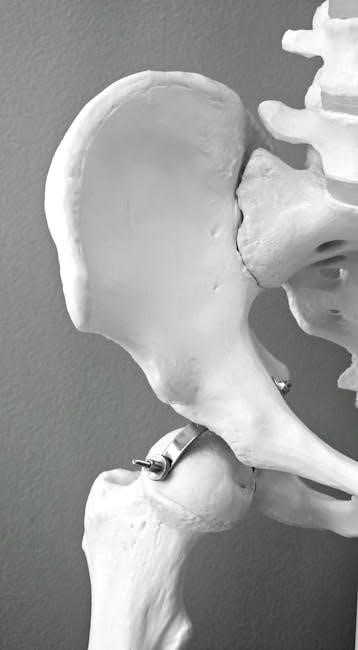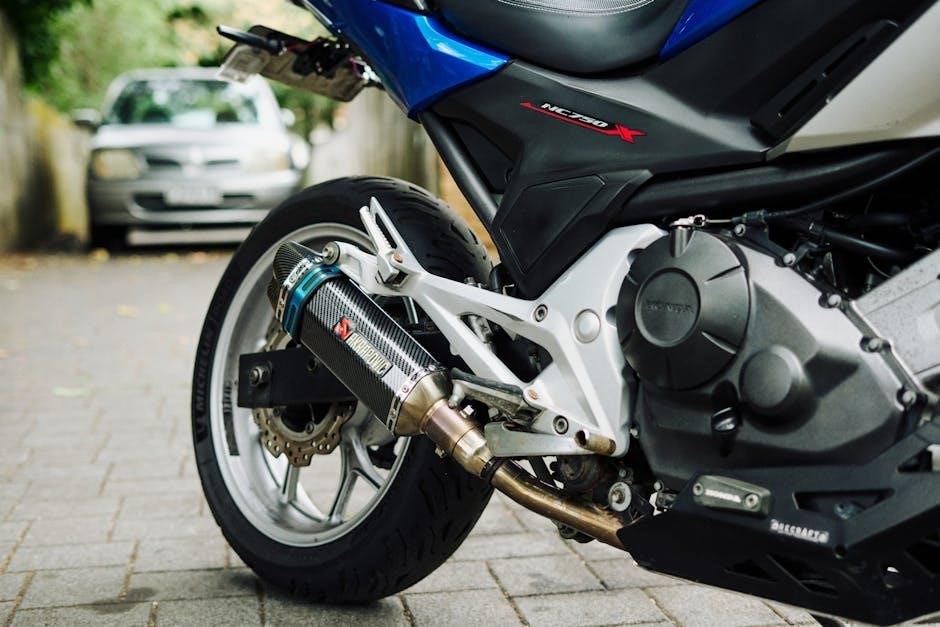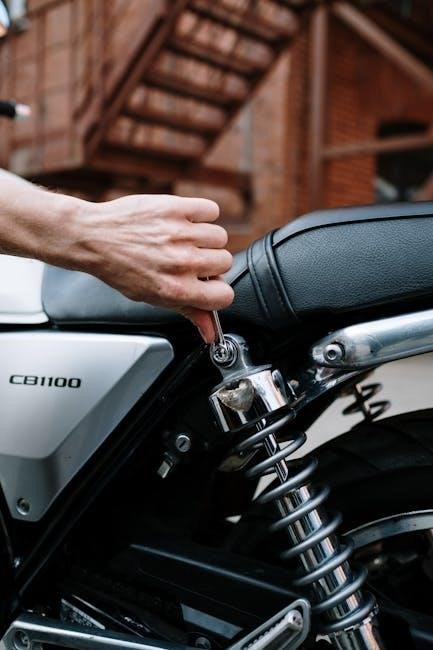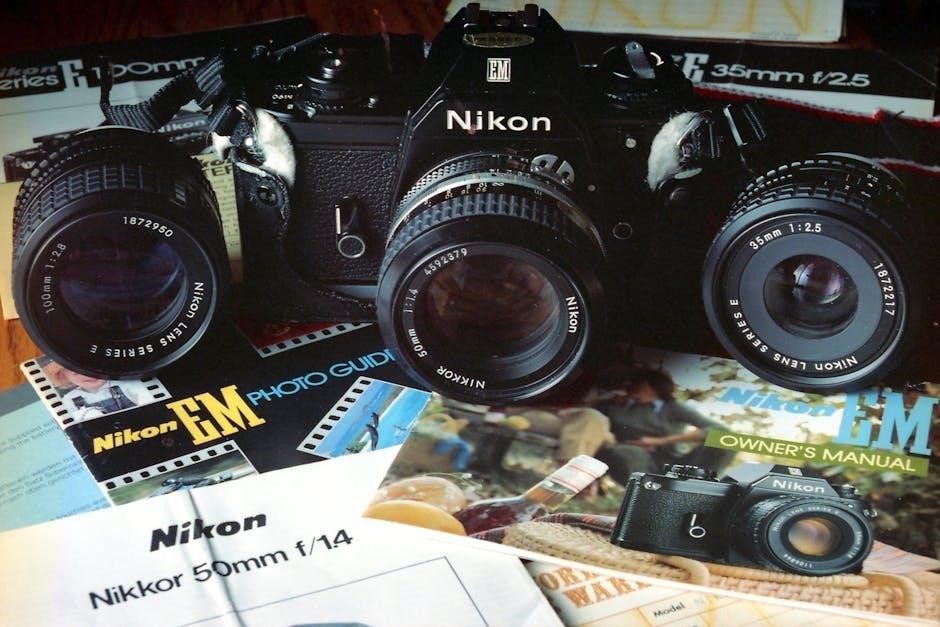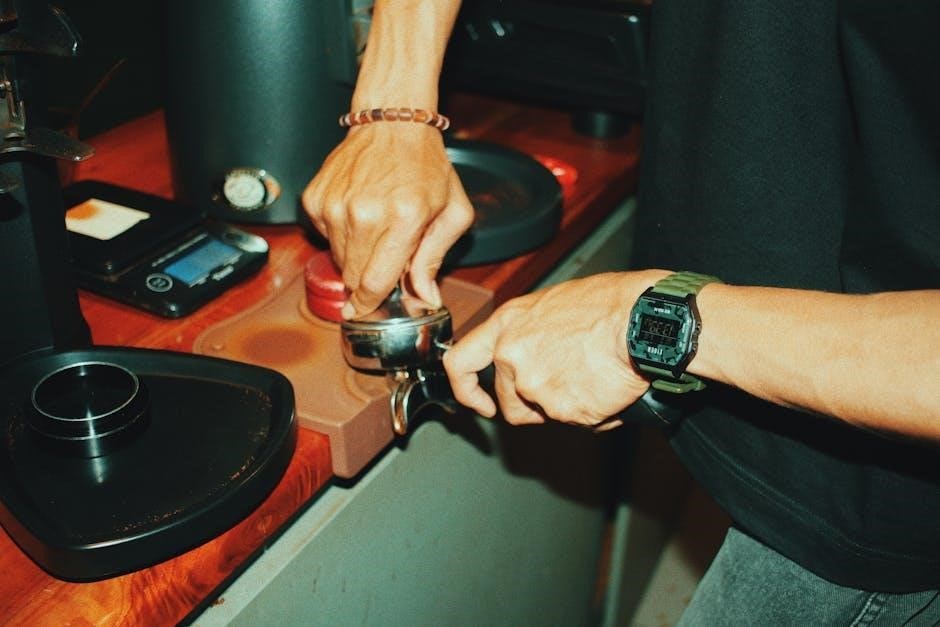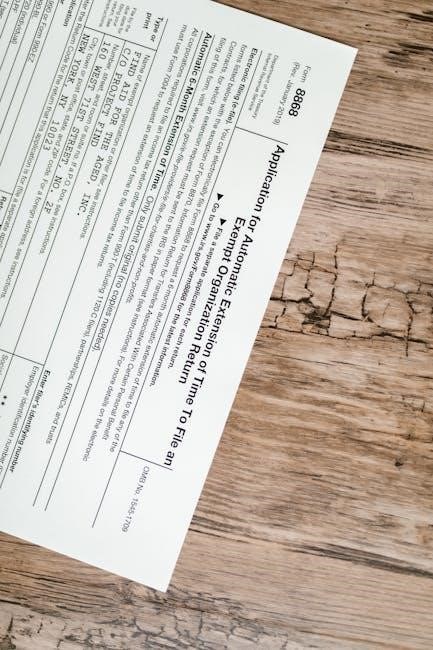A Bro Split Workout Plan is a popular training method focusing on targeting specific muscle groups each day, promoting muscle growth and efficiency․ It emphasizes progressive overload and recovery․
What is a Bro Split Workout Plan?
A Bro Split Workout Plan is a training method that divides workouts into separate days, each targeting specific muscle groups․ It typically involves 4-6 training days, focusing on major muscle groups like chest, back, legs, shoulders, and arms․ This approach allows for intense training sessions with adequate recovery time between workouts․ Unlike full-body routines, Bro Splits prioritize muscle isolation and progressive overload, making it ideal for those seeking significant muscle growth․ The plan often includes compound exercises and isolation movements, ensuring comprehensive development․ By splitting workouts, individuals can maximize intensity and volume for each muscle group, leading to improved strength and hypertrophy․ This structured approach is popular among intermediate and advanced lifters aiming to optimize their training efficiency and results․
Benefits of a Bro Split Routine
A Bro Split Routine offers numerous benefits for muscle growth and training efficiency․ By focusing on specific muscle groups each day, it allows for greater intensity and volume, promoting significant hypertrophy․ This split enables better recovery time between workouts, as each muscle group is only trained every 5-7 days․ It also simplifies workout planning, making it easier to stick to a consistent routine․ Additionally, the Bro Split is ideal for lifters with specific goals, such as building a balanced physique or targeting weak points․ The structured approach ensures that no muscle group is neglected, leading to overall muscle development․ Finally, it allows for mental focus on individual muscle groups, enhancing the effectiveness of each training session and fostering long-term progress․
Who Should Use a Bro Split Workout Plan?
The Bro Split Workout Plan is ideal for intermediate to advanced lifters seeking to maximize muscle growth and strength․ It suits those with specific goals, such as building a balanced physique or targeting weak muscle groups․ The structured approach makes it perfect for individuals who appreciate consistency and can commit to a dedicated routine․ Additionally, it’s beneficial for those who understand the importance of progressive overload and recovery․ However, it may not be the best choice for beginners or those preferring full-body workouts․ Overall, it’s a great option for anyone looking to focus intensely on individual muscle development and adheres to a well-organized training schedule․

Understanding the Bro Split
The Bro Split divides workouts into major muscle groups, typically over 4–6 days, allowing focused training and recovery for optimal muscle growth and strength development․
Definition of a Bro Split
A Bro Split is a training method that divides workouts into specific muscle groups, typically over 4–6 days․ It focuses on isolating major muscle groups like chest, back, legs, and shoulders, allowing targeted growth and recovery․ This approach emphasizes progressive overload and is popular among bodybuilders and intermediate lifters․ Each day is dedicated to a specific muscle group, ensuring intense focus and optimal results․ The Bro Split is designed for efficiency, making it a favorite among those seeking muscle hypertrophy and strength gains․ It offers a structured approach to training, ensuring no muscle group is overworked or neglected․
Muscle Groups and Training Frequency
A Bro Split focuses on training major muscle groups, such as chest, back, legs, shoulders, and arms, typically once or twice per week․ Each workout day targets specific muscles, ensuring adequate recovery time between sessions․ This approach allows for intense focus on each group, promoting significant growth and strength gains․ The training frequency is structured to balance intensity and recovery, preventing overtraining while maximizing hypertrophy․ For example, a 4-day Bro Split might include chest/triceps, back/biceps, legs, and shoulders, with each muscle group trained once weekly․ This setup is ideal for intermediate lifters seeking efficient muscle development and a well-structured training routine․
Traditional Bro SplitRoutine: Chest/Triceps, Back/Biceps, Legs, Shoulders
The traditional Bro Split organizes workouts into four days, targeting specific muscle groups each day for optimal growth․ Day 1 focuses on chest and triceps, combining compound exercises like bench presses with isolation movements such as tricep pushdowns․ Day 2 centers on back and biceps, utilizing deadlifts and rows for back development, followed by curls for biceps․ Day 3 is dedicated to legs, incorporating squats, lunges, and leg presses to build strength and muscle․ Day 4 targets shoulders, with overhead presses and lateral raises to enhance shoulder development․ This structured approach ensures each muscle group receives dedicated attention, promoting balanced growth and preventing overtraining․ It is particularly effective for intermediate lifters aiming for consistent progress and muscle balance․

Creating a Bro Split Workout Plan
A Bro Split Workout Plan focuses on targeting specific muscle groups, ensuring balanced growth and recovery․ It typically involves 4-6 days of training, with dedicated days for chest/triceps, back/biceps, legs, and shoulders․ This structured approach allows for progressive overload, helping to maximize muscle development while minimizing overtraining․ By prioritizing compound movements and proper recovery, the Bro Split is a popular choice for intermediate lifters seeking consistent progress․
Step-by-Step Guide to Designing a Bro Split
Designing a Bro Split involves organizing workouts to target specific muscle groups on separate days․ Start by identifying your fitness goals and experience level․ Choose a 4-6 day structure, allocating days for major muscle groups like chest/triceps, back/biceps, legs, and shoulders․ Select exercises that balance compound movements and isolation exercises for each group․ Schedule rest days to allow recovery and muscle growth․ Incorporate progressive overload by increasing weights or reps weekly․ Track progress through workout logs or strength metrics․ Adjust the routine as needed to avoid plateaus or overtraining․ Ensure proper nutrition and recovery to support muscle development․ This structured approach helps maximize efficiency and results for intermediate lifters․
Choosing Exercises for Each Muscle Group
When selecting exercises for a Bro Split, prioritize compound movements like bench presses, pull-ups, squats, and deadlifts, as they effectively target multiple muscle groups․ For chest days, include incline presses and chest flyes․ Back workouts can feature rows and lat pulldowns․ Legs should focus on squats, lunges, and leg presses․ Shoulders benefit from overhead presses and lateral raises․ Incorporate isolation exercises like bicep curls and tricep pushdowns for detail․ Ensure a mix of pushing and pulling movements for balance․ Choose exercises that align with your equipment and goals, whether using free weights or machines․ Aim for 3-4 exercises per muscle group, with 3-4 sets each․ This approach maximizes growth and avoids redundancy, ensuring a well-rounded routine tailored to your needs․
Setting Up Your Weekly Training Schedule
A well-structured weekly training schedule is key to a successful Bro Split․ Typically, a 4-6 day split allows for optimal recovery and muscle targeting․ Designate specific days for major muscle groups: chest/triceps, back/biceps, legs, and shoulders․ Include rest days or active recovery, such as light cardio or stretching, to avoid overtraining․ For example, a 4-day routine might look like: Day 1 (Chest/Triceps), Day 2 (Back/Biceps), Day 3 (Rest), Day 4 (Legs), Day 5 (Shoulders/Abs), and Days 6-7 (Rest)․ Adjust the frequency based on experience and goals․ Ensure each session starts with a warm-up and ends with a cool-down․ Consistency is crucial, so plan your workouts in advance and stick to the schedule for best results․ Tailor the routine to fit your lifestyle and training preferences for sustained progress․

Sample Bro Split Workout Routines
Explore various Bro Split routines, such as 4-day, 5-day, or 6-day splits, each targeting specific muscle groups to maximize growth and efficiency․ Customize based on your goals and experience․
4-Day Bro Split Routine
A 4-Day Bro Split Routine is a popular choice for balancing intensity and recovery․ It typically includes four training days, targeting major muscle groups, with three rest days․ Day 1 focuses on chest and triceps, with exercises like bench presses and incline presses․ Day 2 targets back and biceps, incorporating pull-ups and barbell rows․ Day 3 is dedicated to legs, featuring squats and lunges․ Day 4 covers shoulders and abs, with overhead presses and lateral raises․ This split allows for adequate recovery time while ensuring each muscle group is worked sufficiently․ It’s ideal for intermediate lifters aiming to build strength and muscle mass․ Incorporating progressive overload and proper nutrition will enhance results․ This routine is flexible and can be adjusted based on individual goals and experience levels․
5-Day Bro Split Routine
A 5-Day Bro Split Routine is designed for those seeking a more detailed approach to muscle development․ It typically includes five training days, focusing on specific muscle groups, with two rest days․ Day 1 targets chest and triceps, Day 2 focuses on back and biceps, Day 3 is for legs, Day 4 covers shoulders and abs, and Day 5 is reserved for full-body or accessory exercises․ This split allows for increased focus on each muscle group, promoting balanced growth and recovery․ It’s ideal for intermediate to advanced lifters who can handle higher training frequencies․ Incorporating progressive overload and proper nutrition enhances results․ The 5-Day Bro Split is versatile, enabling lifters to address weak points and achieve a well-rounded physique․ It’s a effective way to maximize muscle development while maintaining recovery․
6-Day Bro Split Routine
A 6-Day Bro Split Routine is an advanced training approach, offering greater detail and intensity․ It typically includes six training days with one rest day, allowing for increased focus on specific muscle groups․ Days are often divided as follows: Day 1 (Chest/Triceps), Day 2 (Back/Biceps), Day 3 (Legs), Day 4 (Shoulders/Abs), Day 5 (Arms), and Day 6 (Full-Body or Weak Point Training)․ This split is ideal for advanced lifters seeking to maximize muscle development and address specific weaknesses․ It promotes high training frequency and volume, which can accelerate progress for those who can handle the demands․ Proper nutrition, recovery, and progressive overload are critical to avoid overtraining․ The 6-Day Bro Split is a comprehensive approach for achieving a well-rounded, athletic physique․

Progressive Overload in Bro Split Training
Progressive overload involves gradually increasing weight or reps to challenge muscles, enhancing growth and strength․ It is essential for continuous progress in a Bro Split routine․
What is Progressive Overload?
Progressive overload is a training principle where you gradually increase the weight, resistance, or repetitions over time to challenge muscles and stimulate growth․ It is essential for continuous progress in strength and muscle development․ By consistently adding load, you signal to your body that it needs to adapt, leading to hypertrophy and improved performance․ For example, if you bench press 70kg for 8 reps today, aim to lift 72․5kg or complete 10 reps in the next session․ This gradual progression ensures muscles remain challenged, preventing plateaus and fostering long-term gains․ Incorporating progressive overload into your Bro Split routine is key for achieving your fitness goals effectively․
How to Implement Progressive Overload in a Bro Split
To implement progressive overload in a Bro Split, start by tracking your workouts to monitor strength gains․ Gradually increase the weight or resistance you lift each week․ For example, if you bench press 70kg for 8 reps, aim to lift 72․5kg or complete 10 reps next session․ Consistency is key—apply this principle to every exercise in your routine․ Additionally, focus on improving form and technique to maximize muscle engagement․ Allow adequate recovery time between sessions to avoid overtraining․ By systematically challenging your muscles, you ensure continuous progress and avoid plateaus, making progressive overload a cornerstone of an effective Bro Split workout plan․
Tracking Progress in Your Workout Plan
Tracking progress in a Bro Split workout plan involves monitoring strength gains, muscle growth, and overall consistency․ Keep a workout log to record weights, reps, and sets completed each session․ Use progress photos and measurements to visually assess muscle development over time․ Regularly test your one-rep max for key lifts to measure strength improvements․ Adjust your routine based on progress, increasing weights or reps as needed․ Consistency is vital, so ensure you maintain regular training and recovery schedules․ By systematically tracking your journey, you can identify areas for improvement and stay motivated, ensuring long-term success in your Bro Split workout plan․

Nutrition and Recovery for Bro Split
Nutrition and recovery are crucial for muscle growth and energy replenishment in a Bro Split․ Focus on high-quality protein, carbs, and hydration․ Ensure adequate rest and sleep, and consider supplements like protein powder to support recovery and muscle repair․
Importance of Nutrition in Muscle Building
Nutrition plays a pivotal role in muscle building, as it provides the necessary fuel for workouts and recovery․ A well-balanced diet rich in protein, carbohydrates, and healthy fats supports muscle growth and repair․ Protein is essential for muscle synthesis, while carbs provide energy for intense training sessions․ Proper hydration is also crucial to maintain performance and recovery․ Additionally, supplements like protein powder can help meet daily nutritional needs, especially when following a Bro Split plan․ Without adequate nutrition, muscle growth and recovery may be hindered, reducing the effectiveness of the workout routine․ Ensuring a calorie surplus with nutrient-dense foods is vital to maximize muscle gains and support overall health․
Role of Recovery in a Bro Split Routine
Recovery is a critical component of a Bro Split routine, allowing muscles to repair and grow after intense workouts․ Adequate rest ensures muscle fibers rebuild stronger, preventing overtraining․ Proper sleep enhances recovery, while techniques like stretching and foam rolling reduce muscle soreness․ Additionally, active recovery, such as light cardio, promotes blood flow without overtaxing muscles․ Without sufficient recovery, performance may decline, and muscle growth stalls․ Balancing rest with training optimizes results and prevents injuries, making recovery essential for sustained progress in a Bro Split plan․
Supplements to Support Your Bro Split Workout
Supplements can enhance your Bro Split workout by supporting muscle growth and recovery․ Whey protein is essential for post-workout recovery, helping to rebuild muscle fibers․ Creatine boosts strength and endurance, allowing for more intense sessions․ BCAAs reduce muscle soreness and promote recovery during and after workouts․ Pre-workout supplements increase energy and focus, helping you power through challenging routines․ Additionally, multivitamins ensure you meet daily nutrient needs, supporting overall health․ While supplements are beneficial, they should complement, not replace, a balanced diet and proper recovery․ By incorporating these, you can maximize gains and maintain consistency in your Bro Split plan․
Common Mistakes in Bro Split Workouts
- Overtraining can lead to fatigue and injury․
- Ignoring proper form increases risk of harm․
- Consistency is key; skipping workouts hinders progress․
Overtraining and Its Effects
Overtraining occurs when excessive workout volume exceeds recovery capacity, leading to physical and mental fatigue․ It can hinder progress, cause injuries, and result in muscle imbalances․ Symptoms include persistent soreness, decreased performance, and mental burnout․ Overtraining disrupts recovery, which is crucial for muscle growth and strength gains․ It can also weaken the immune system and lower motivation․ To avoid this, balance workout intensity with adequate rest and nutrition․ Ensuring proper recovery between sessions is vital for sustainable progress in a Bro Split routine․ Ignoring these signs can lead to long-term setbacks, making it essential to listen to your body and adjust your training plan accordingly․
Ignoring Proper Form and Technique
Ignoring proper form and technique is a common mistake that can lead to injuries and less effective workouts․ Poor form often results in targeting the wrong muscle groups, reducing the exercise’s efficiency․ It can also cause strain on joints and supporting muscles, increasing the risk of injury․ Over time, consistently poor technique may lead to muscle imbalances and poor posture․ To avoid this, focus on controlled movements, engage the correct muscles, and avoid using momentum or excessive weight․ Seeking guidance from a trainer or experienced lifter can help improve form․ Additionally, filming your workouts or training in front of a mirror can provide valuable feedback to ensure proper technique․
Not Adhering to Consistency

Consistency is crucial for achieving muscle growth and strength gains in a Bro Split Workout Plan․ Missing workouts or failing to follow the routine regularly can disrupt progress and reduce effectiveness․ Inconsistent training often leads to stalled muscle growth, as the body doesn’t receive the repeated stimulus needed to adapt․ Additionally, skipping sessions can cause muscle imbalances and prevent optimal recovery․ To maintain consistency, create a schedule and stick to it, even if it means adjusting for unexpected events․ Tracking workouts and setting realistic goals can help stay motivated․ Remember, muscle-building is a long-term commitment, and irregular training undermines its potential․ Stay disciplined and prioritize your workouts to maximize results․
A well-structured Bro Split Workout Plan is effective for muscle growth and strength․ Consistency, recovery, and proper nutrition are key to achieving desired results and avoiding plateaus․ Start your journey today!
Final Thoughts on Bro Split Workout Plan
The Bro Split Workout Plan is a proven method for building muscle and improving strength, especially for intermediate lifters․ It allows for focused training on specific muscle groups, enhancing growth and recovery․ With proper execution, consistency, and nutrition, this plan can yield significant results․ Avoiding common mistakes like overtraining and poor form is crucial for long-term success․ Whether following a 4-, 5-, or 6-day routine, staying committed and tracking progress ensures sustained muscle development․ For those seeking a structured yet flexible approach, the Bro Split remains a timeless choice in fitness regimens․
Encouragement to Start Your Bro Split Journey
Starting a Bro Split workout plan is an exciting step toward building strength and muscle․ This structured approach ensures focused training and recovery, making it ideal for those seeking consistent progress․ With its clear muscle group breakdown and flexible scheduling, the Bro Split is accessible for lifters of all levels․ Embrace the journey, stay disciplined, and enjoy the transformation․ Remember, every workout brings you closer to your goals․ Be motivated, track your progress, and celebrate small victories․ The Bro Split community is vast, offering support and inspiration․ Take the first step confidently and commit to your fitness journey․ Your muscle-building adventure awaits—start strong and stay dedicated!



